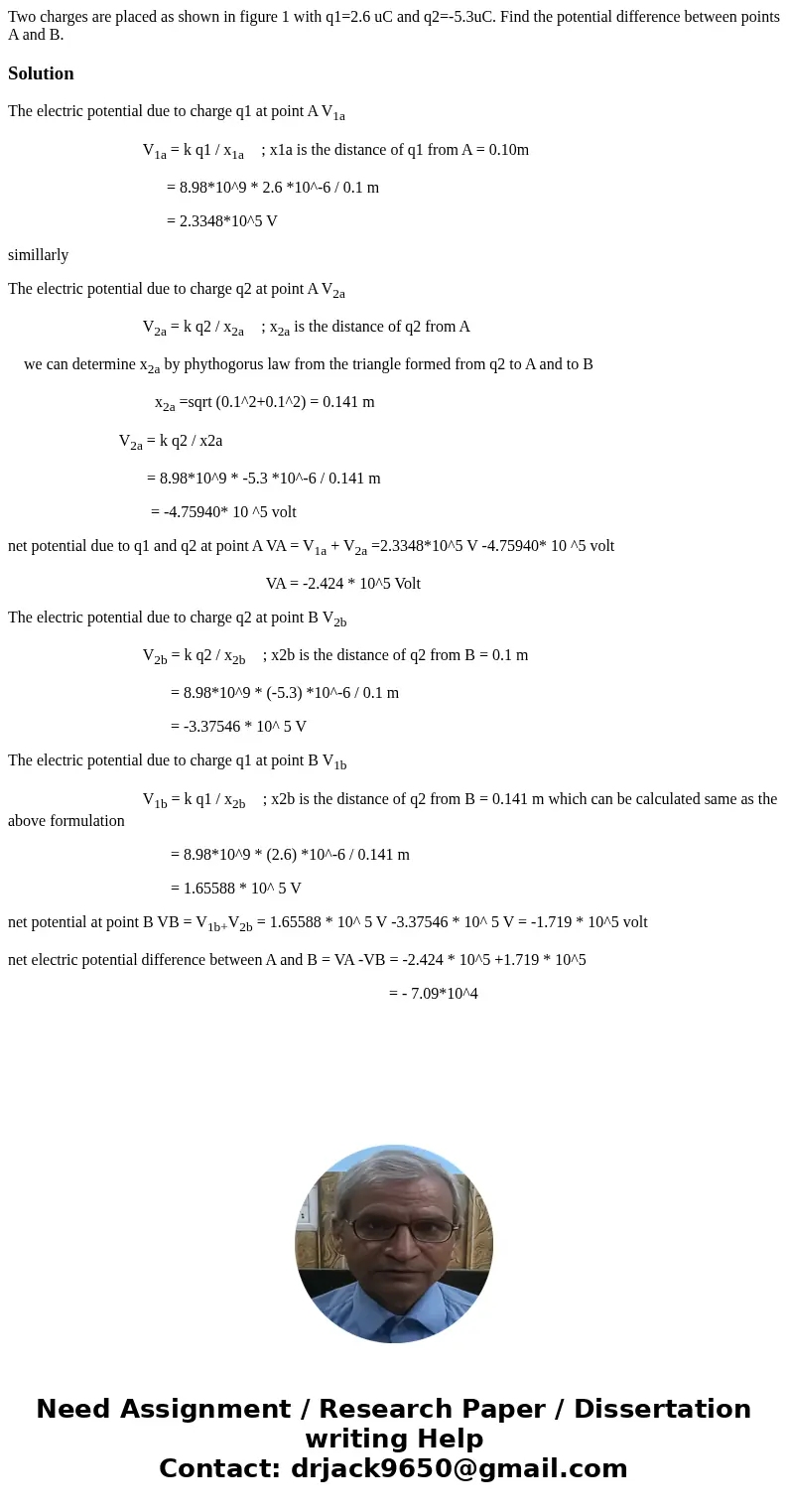Two charges are placed as shown in figure 1 with q126 uC and
Solution
The electric potential due to charge q1 at point A V1a
V1a = k q1 / x1a ; x1a is the distance of q1 from A = 0.10m
= 8.98*10^9 * 2.6 *10^-6 / 0.1 m
= 2.3348*10^5 V
simillarly
The electric potential due to charge q2 at point A V2a
V2a = k q2 / x2a ; x2a is the distance of q2 from A
we can determine x2a by phythogorus law from the triangle formed from q2 to A and to B
x2a =sqrt (0.1^2+0.1^2) = 0.141 m
V2a = k q2 / x2a
= 8.98*10^9 * -5.3 *10^-6 / 0.141 m
= -4.75940* 10 ^5 volt
net potential due to q1 and q2 at point A VA = V1a + V2a =2.3348*10^5 V -4.75940* 10 ^5 volt
VA = -2.424 * 10^5 Volt
The electric potential due to charge q2 at point B V2b
V2b = k q2 / x2b ; x2b is the distance of q2 from B = 0.1 m
= 8.98*10^9 * (-5.3) *10^-6 / 0.1 m
= -3.37546 * 10^ 5 V
The electric potential due to charge q1 at point B V1b
V1b = k q1 / x2b ; x2b is the distance of q2 from B = 0.141 m which can be calculated same as the above formulation
= 8.98*10^9 * (2.6) *10^-6 / 0.141 m
= 1.65588 * 10^ 5 V
net potential at point B VB = V1b+V2b = 1.65588 * 10^ 5 V -3.37546 * 10^ 5 V = -1.719 * 10^5 volt
net electric potential difference between A and B = VA -VB = -2.424 * 10^5 +1.719 * 10^5
= - 7.09*10^4

 Homework Sourse
Homework Sourse